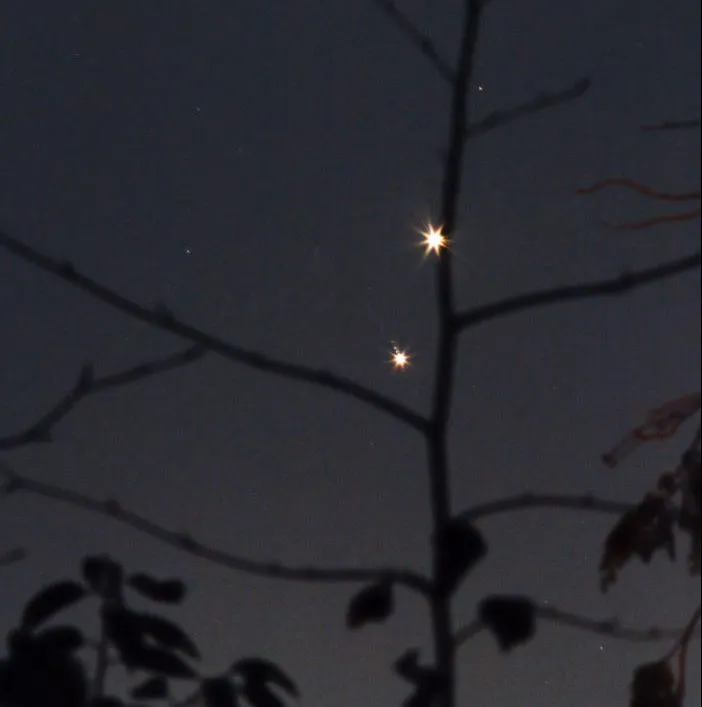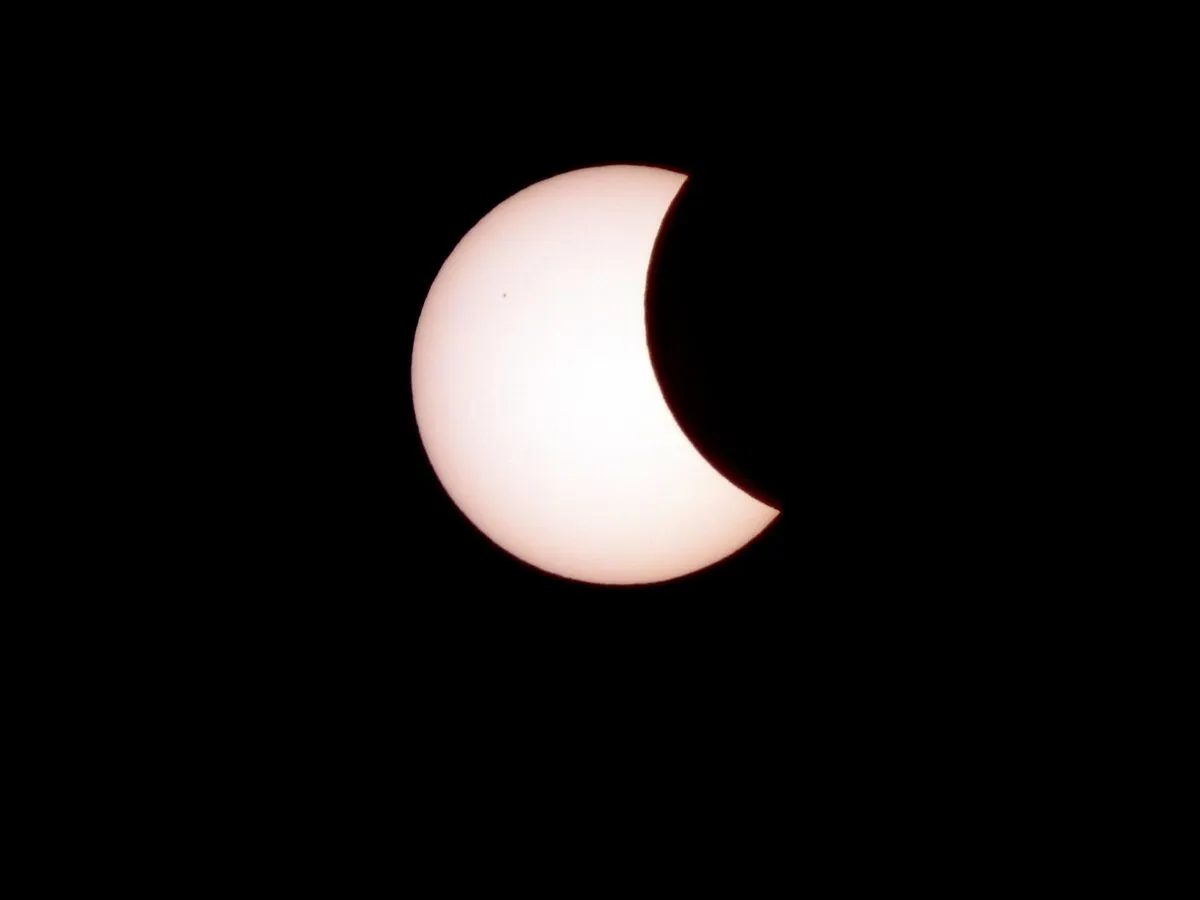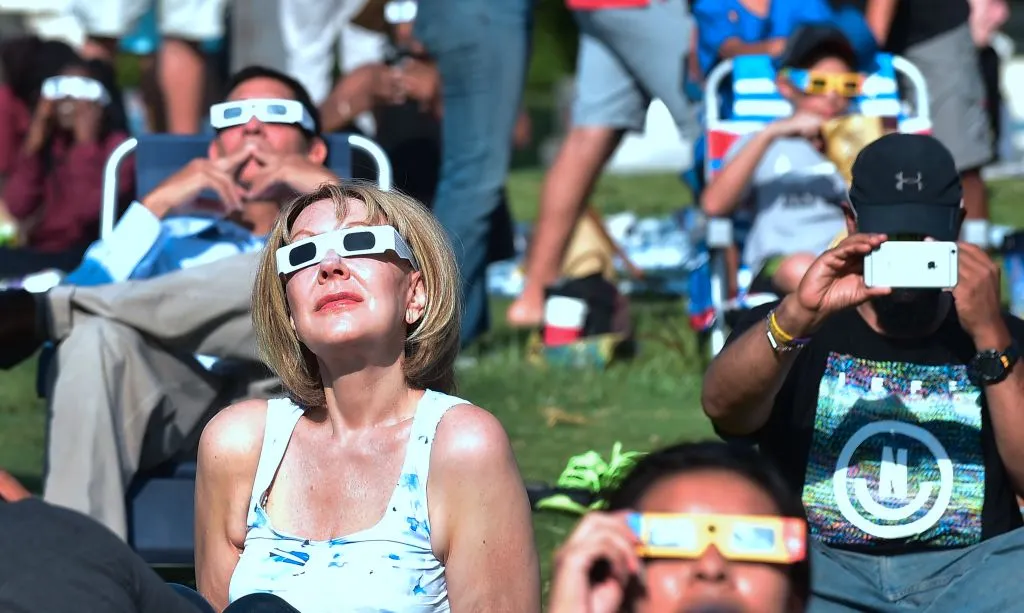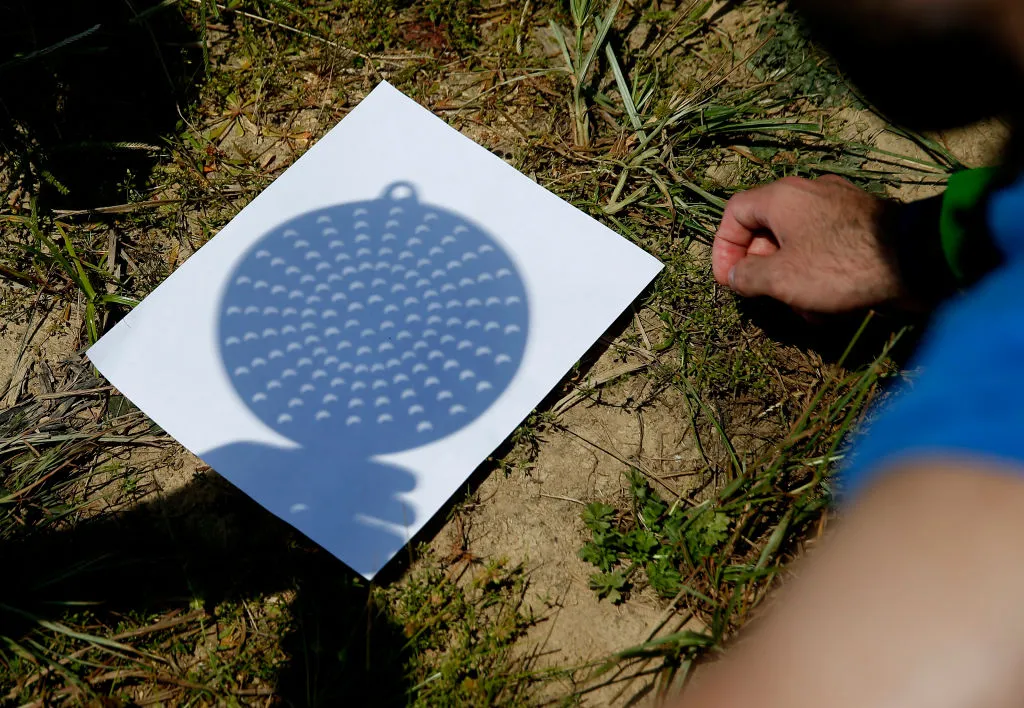In case you haven't heard, there's a partial solar eclipse visible from the UK this Saturday, 29 March beginning at 10am.
You've perhaps already worked out that that date is a Saturday, and at a rather respectable time, too.
What a stroke of luck that is.
So often we find that the big, upcoming astronomical event we're all looking forward to is actually taking place at 3am on a Tuesday morning.
It's great to have something as magical as a solar eclipse happening on a springtime Saturday morning at peak play park time.

As the dad of a four-year-old, I'm relishing the opportunity to get my son involved in his first major celestial spectacle.
We spent January and February 2025 on many's an evening walk in our local park, whiling away the hour or so between finishing dinner and beginning the ever-eventful bedtime routine.

We'd look west into the evening twilight and spot Venus shining brightly: the first 'star' visible with the naked eye.
We'd talk about what it would be like to visit Venus, and whether he thought there might be any astronauts or 'friendly' aliens living on the planet.
Now I'm prepping myself, fingers crossed for a clear day, ready for him to see his first ever solar eclipse.
I'm partial to an eclipse, myself
On Saturday 29 March, what we'll be looking at – all being well, weather-wise – is a partial eclipse of the Sun, or a partial solar eclipse.
This occurs when the Moon passes in front of the Sun from our perspective on Earth.
During a total solar eclipse, the sky grows dark as the Moon blocks out the Sun completely.

This is down to a nice coincidence of nature that means the Sun and the Moon are roughly the same size in the sky, from our perspective.
Instead, what's happening this Saturday is a partial solar eclipse, meaning only part of the Sun will be covered by the Moon.
As a result, solar eclipse glasses must be worn for the duration of the event, because observing a solar eclipse means looking at the Sun (which, it should hardly need pointing out, isn't a good idea without proper solar-observing equipment).

When and where
Think 'Saturday, 10am'. That's the time you'll want to have a clear view of the Sun. That means no tall trees or buildings.
From 10am onwards, look at the Sun through your eclipse glasses and you'll begin to see a 'bite' being taken out of the Sun, as the Moon begins to pass in front of the Sun from the right hand side.
As you watch, more and more of the Sun will be covered by the Moon. Keep those eclipse glasses on throughout.
The eclipse will last until midday, with maximum eclipse – the point at which you'll see the biggest 'bite' taken out of the Sun by the Moon – occurring around 11am.
By 10am, the Sun will be pretty high in the sky, visible in the southeast. By midday, it will be in the south.
I've already taken a walk up to our designated eclipse-viewing spot in the local park, just to determine the best place from which to see the eclipse between 10am and midday.
Again, don't actually look directly at the Sun when you're scouting your viewing location, but instead make a note of where the Sun is around this time of day.
Once you've worked out the best place to see the Sun from 10am onwards, you've found your eclipse-viewing spot, and just need to keep your fingers and toes crossed for good weather on Saturday.

Observing a solar eclipse with kids
A partial solar eclipse is safe to observe with children, provided no-one looks at the Sun directly without safe, solar-observing equipment.
In short, eclipse glasses must be worn (although there are easy, indirect ways to observe a solar eclipse, which we'll discuss below).
And you should never leave children to observe a solar eclipse unattended, even if they are wearing eclipse glasses. Always supervise.
Eclipse glasses work by blocking out the vast majority of visible light from the Sun, making the Sun safe to look at while you're wearing them.
Make sure to buy properly certified solar eclipse glasses from a reputable supplier.
And always check them for tears and pinpricks before use. If they are even slightly damaged, do not use them.
Find out more about this in our guide to making sure your eclipse glasses are safe.

On the day
All of which leads me to wonder how likely it is I'll be able to convince my four-year-old son to wear solar eclipse glasses.
It can often be hard enough to convince him to wear a wooly hat and scarf on a cold day ("no, your pirate hat won't protect you from the cold. It's December")
So I'm already considering how exactly to tackle this.
Emphasise the point too much and they'll either a) be terrified into not wanting to look at the eclipse at all; or b) refuse to wear the eclipse glasses as an act of defiance.
As if to make things worse, eclipse glasses aren't exactly comfortable.
They're made of cardboard and, unlike spectacles, we don't have the luxury of trying a few different models and picking which one feels most snug.
But they are – to over-emphasise the point here – an absolute must if you're going to be observing a solar eclipse.
Sunglasses won't cut it, neither will any of the other strange and erroneous eclipse-viewing alternatives we've heard about over the years (welder's masks, smoked-stained glass, bin bags...)

So how will I make sure my four-year-old is excited about the eclipse, but also agrees to wear eclipse glasses?
My current plan, as ever, is to judge the mood on the day, but to talk to him about it a day or so leading up to the event, so the plan is clear.
Let him wear the eclipse glasses indoors, so it doesn't come as a surprise on Saturday morning.
Explain they're not a toy, but a special device that will mean we can see the eclipse without hurting our eyes.
Of course, we may find that, when eclipse hour approaches, they suddenly decide this whole Sun-Moon-Earth alignment thing isn't really such a big deal, and the swings and slides are a far more relishing prospect.
But I'll make sure I'm prepared for the best-case scenario, that being an eager kid who can't wait to see his first solar eclipse with his parents.
If this happens, my tactic will be to watch him like a hawk, forgoing my own eclipse experience to make sure those eclipse glasses stay firmly on his head.
When kids are this young, you wonder how much of your time spent together they will actually remember when they reach adulthood.
What will be their earliest memory?
Surely, watching the Moon pass in front of the Sun on a care-free Saturday morning in their favourite play park wouldn't be a bad one at all.
Eclipse alternatives

If the safety issues around solar eclipses and eclipse glasses worry you – as they understandably might, where kids are concerned – or if your kids are really young, there is a way of indirectly observing a solar eclipse.
It's called 'solar projection', and it just means casting an image of the Sun onto a sheet of white card, so you can see the shadow of the Moon passing in front of the Sun.
Do this by laying a piece of card upright so it's 'facing' the Sun.
Then get a second piece of card and make a small, circular hole in it, around 2-3mm wide.

Hold up that second piece of card so it's projecting a small circle of sunlight onto the first piece of card.
You're projecting an image of the Sun.
If you do this during the eclipse, you'll see a 'bite' being taken out of that circle of sunlight on the card. That 'bite' is the shadow of the Moon.
You can achieve the same effect by using a colander or a tea strainer, and the holes of sunlight cast by your chosen kitchen utensil will project the shape of the eclipse onto the card.
Find out more about this in our guide on how to safely observe a solar eclipse.

You can also watch the solar eclipse online, courtesy of the live stream from the Royal Observatory Greenwich below, which is a great option if you can't make it out on the day, or it's cloudy where you are.
Whatever you do, however you observe, we wish you and your family clear skies for the day, and a final reminder to observe this solar eclipse safely through certified eclipse glasses.
Wish me luck!
If you do see the solar eclipse, share your images and experiences with us by emailing contactus@skyatnightmagazine.com

